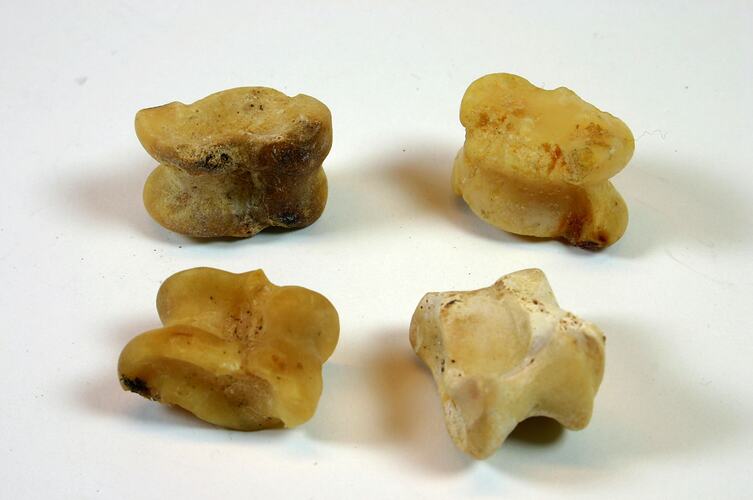Summary
Alternative Name(s): Knucklebone Jacks, Astragali, Astragalus, Talus
Collected during the Aboriginal Children's Play Project by Paula King, Researcher. Given to Paula by Barbara Impey (later Hoppner), then aged 52, who played Jacks with sheeps' knucklebones as a child.
The Australian Children's Folklore Collection is unique in Australia, documenting contemporary children's folklore across Australia and in other countries reaching back to the 1870s. The Collection has a strong component of research material relating to Victoria.
Knucklebones, or Jacks, is an ancient game, dating back to prehistoric times. The first jacks were natural materials - animal bones, stones, seeds and shells. Sheep's knucklebones were the most common type of jacks in Australia during the first half of this century, and children would colour them by boiling them in water with ink or dye. During the 1950s, mass-produced plastic knucklebones became available.
These objects are examples of sheeps' knucklebones used by children in Australia and overseas to play Jacks. They were usually collected from the Sunday roast leg of lamb, and kept until there was a set of five to play Jacks.
Physical Description
Four sheeps' knucklebones, two yellowed with small dry bits of animal tissue attached, two dried and clean, with signs of weathering. One of the dried bones is white, the other is white with a brown discolouration on one surface. One of the yellowed bones has large pieces missing from one side.
More Information
-
Collection Names
-
Collecting Areas
-
Acquisition Information
Cultural Gifts Donation from Dr June Factor, 18 May 1999
-
Acknowledgement
Donated through the Australian Government's Cultural Gifts Program.
-
Date Used
-
Collector
-
Classification
-
Category
-
Discipline
-
Type of item
-
Keywords
Aboriginal History, Children's Folklore, Children's Play, Farm Animals, Food Technology, Games, Livestock, Sheep, Making History - Australian Childrens Folklore



